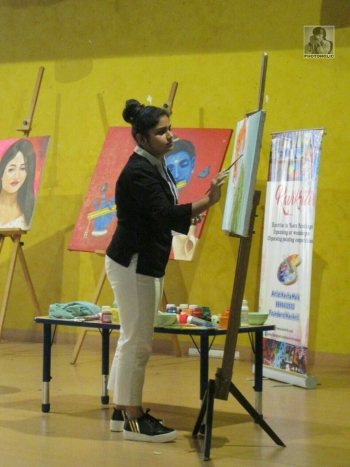
The evolution of painting is like biological evolution – it happens minutely, so there is no distinct breaking point between one form of painting and other form of painting that develops from it. Therefore, it is impossible to say that one form of painting is really older than any other one; they are all as old as humanity itself. That being said, the one form of art that we are going to discuss today is very unique. Every aspect of this art is special. Though common masses may find it similar to modern art, yet it is very different from it. It is art created by differently abled; it is called Outsider Art.
It was in the 1940s that a French artist called Jean Dubuffet first brought self-taught art out of the asylums, and into the galleries. Dubuffet christened it “Art Brut,” a legacy of his days in the wine trade, where “brut” means raw or unsugared. He was interested in the lack of sophistication of the work, which he saw as art in pure sense. For him, unlike modern paintings, a spontaneous outpouring from the wellspring of creativity was the mark of true art. Outsider art is truly authentic and creative art. He was interested in a kind of art, which is deliberately a stranger to culture.
Dubuffet toured asylums in central Europe, hoovering up work and creating an alternative canon of Art Brut. He discovered people like Aloise Corbaz, a Swiss governess whose imagined affair with Kaiser Wilhelm II led to an erotic outpouring of drawings, collage and murals, and Adolf Wolfli, an Outsider Artist who suffered from and created more than 25,000 pages of drawings, literature and music in a notation that he invented himself. He signed all these pages as “St. Adolf II”.
Dubuffet often had problems finding art, because the hospitals rarely archived it. The psychiatric world didn’t fully appreciate the value of what their patients were making. But times have changed. In the forest north of Vienna lies the Art/Brut Centre, Gugging. Gugging is famous for its House of Artists, home to 14 psychiatric patients who have been plucked from the Austrian system thanks to their artistic talent. These artists live there full-time. There is no obligation for them to make art, but still it pours out of them. Perhaps the best known Gugging artist is the now deceased August Walla. It was almost as though his creative urges could not be contained within his room, and exploded into the surrounding countryside, which he peppered with his work on any available surface. The Vatican has the Sistine Chapel, and Gugging has August Walla’s old room. Just like some famous modern paintings, the artworks created by Outsider Artists seem to have the ability to transport diverse people in the same way that an inkblot test does. Art lovers look at something and go like, “What is this image?” One person will say, “Oh it’s an airplane,” other may say that it’s a car and things like that – it is like there artworks compel onlookers to bring their own brain to the work. And, that is a wonderful thing.
Everyone is desperately trying to put Outsider Art into a nice, neat little box like modern art or contemporary art. However, Outsider Art does not really fit in a box because it is something that happened independently. It is something that owes nothing to art history. When you owe nothing to art history, you really have a problem. Outsider Art includes work that was not made with the trapping of sentiments like, “Will I get into one of the good galleries?” It is very nice that such works are being displayed at the Venice Biennale; they certainly deserve a place there. But, at the same time these artists don’t want to be so much part of the whole, “Oh, what’s the market doing?” Many of the passionate Outsider Art collectors are in some ways as obsessive as the artist that they collect. They love the woks they have, and they keep them.
There is an obsessive quality to many of these artists. Often, they work in isolation. Where professional artists forge their creations in a dialogue without art history, the outsider is engaged in a monologue. And, that is the beauty of it.





















